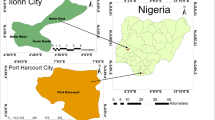Abstract
The vegetation of a forest-steppe region in Hustain Nuruu, Mongolia, was studied by a phytocoenological approach. Eleven plant communities were recognized, comprising four steppe communities, two meadow communities, a tussock grassland, two shrub communities, a scrub community and a woodland community. The botanical and ecological characteristics of the different communities are discussed, with reference to the existing classification of Mongolian plant communities. Analysis of the present data indicates that a refinement or extension of the classification system is desirable, especially concerning the steppe(-related) communities. Discussion of the relative distribution of steppe and forest reveals that in the relatively dry location of Hustain Nuruu grassland and shrubland dominate the natural vegetation (88% of the area). Forest covers ca. 5% of the area, it is limited to sites where ground water is within rooting depth: north slopes above 1400 m (Betula platyphylla woodland) and along erosion gullies (fragmentary Ulmus pumila gallery woodland). Under natural conditions forest cover might reach 12%, but it is speculated that wild ungulates could maintain its extension at a lower level. The importance of forest is greater in forest-steppe regions with higher rainfall, but the factors determining the distribution of grassland and forest are expected to be similar.
Similar content being viewed by others
References
Coupland, R.T. 1979. The nature of grassland. pp. 23–29. In: Coupland, R.T. (ed.) Grassland Ecosystems of the world, Analysis of Grasslands and their Uses. IBP Handbook no. 18. Cambridge University Press, Cambridge, UK.
Coupland, R.T. (ed.). 1992. Natural grasslands — Introduction and Western hemisphere. Ecosystems of the World, Vol 8A. Elsevier, Amsterdam, The Netherlands.
Coupland, R.T. (ed.). 1993. Natural grasslands — Eastern hemisphere and résumé. Ecosystems of the World, Vol 8B. Elsevier, Amsterdam, The Netherlands.
Ellenberg, H. 1982. Vegetation Mitteleuropas mit den Alpen in ökologischer Sicht. 3rd ed. Eugen Ulmer, Stuttgart, Germany.
Foundation Reserves Przewalski Horse. 1992. Hustain Nuruu Steppe Reserve Mongolia. Project Proposal, Rotterdam, The Netherlands.
Germeraad, P.W., Dierendonck, M.C.van, & Wallis de Vries, M.F. 1993. Standaard rapportage model Hustain Nuruu Steppe Reserve Mongolia (MN/92/850). FRPH, Rotterdam/DGIS. The Hague, The Netherlands.
Grubov, V.I. 1982. Key to the Vascular Plants of Mongolia. NAUKA. Leningrad, Russia. (In Russian).
Hilbig, W. 1987. Zur Problematik der ursprünglichen Waldverbreitung in der Mongolischen Volksrepublik. Flora 179: 1–15.
Hilbig, W. 1990. Pflanzengesellschaften der Mongolei. Erforschung biologischer Ressourcen der Mongolischen Volksrepublik, Band 8. Halle, Germany.
Hilbig, W. & Knapp, H.D. 1983. Vegetationsmosaik und Florenelemente an der Wald-Steppen-Grenze im Chentej-Gebirge (Mongolei). Flora 174: 1–89.
Lavrenko, E.M., Karamysheva, Z.V., Borisova, I.V., Propova, T.A., Guricheva, N.P. & Nikulina, R.I. 1993. Steppes of the former Soviet Union and Mongolia. pp. 3–59. In: Coupland, R.T. (ed.) Natural Grasslands — Eastern Hemisphere and Résumé. Ecosystems of the World, Vol 8B. Elsevier, Amsterdam, The Netherlands.
Mueller-Dombois, D. & Ellenberg, H. 1974. Aims and Methods of Vegetation Ecology. John Wiley, New York, USA.
Nimis, P.L., Malyshev, L.I. & Bolognini, G. 1994. A phytogeographic analysis of birch woodlands in the southern part of West Siberia. Vegetatio 113: 25–39.
Succow, M. & Kloss, K. 1978. Standortverhältnisse der nordmongolischen Waldsteppenzone im Vorland des westlichen Chentej. Arch. Acker- Pflanzenbau Bodenkd., Berlin 22: 529–542.
Walter, H. 1974. Die Vegetation Osteuropas, Nord- und Zentralasiens. Gustav Fisher Verlag, Stuttgart, Germany.
Walter, H. 1977. Vegetation of the Earth and Ecological Systems of the Geo-biosphere, 2nd ed. Springer Verlag, New York, USA.
White, P.S. & Pickett, S.T.A. 1985. Natural disturbance and patch dynamics: an introduction. pp. 3–13. In: Pickett, S.T.A. & White, P.S. (eds) The ecology of natural disturbance and patch dynamics. Academic Press, Orlando, Florida, USA.
Yunatov, A.A., Dashnima, B. & Gerbikh, A.A. 1979. Vegetation Map of the Mongolian People's Republic, Naukia, Moscow.
ZhuTing-Cheng. 1993. Grasslands of China. pp. 61–82. In: Coupland, R.T. (ed.), Natural Grasslands — Eastern Hemisphere and Résumé. Ecosystems of the World, Vol 8B. Elsevier, Amsterdam, The Netherlands.
Author information
Authors and Affiliations
Rights and permissions
About this article
Cite this article
Wallis de Vries, M.F., Manibazar, N. & Dügerlham, S. The vegetation of the forest-steppe region of Hustain Nuruu, Mongolia. Vegetatio 122, 111–127 (1996). https://doi.org/10.1007/BF00044694
Accepted:
Issue Date:
DOI: https://doi.org/10.1007/BF00044694




